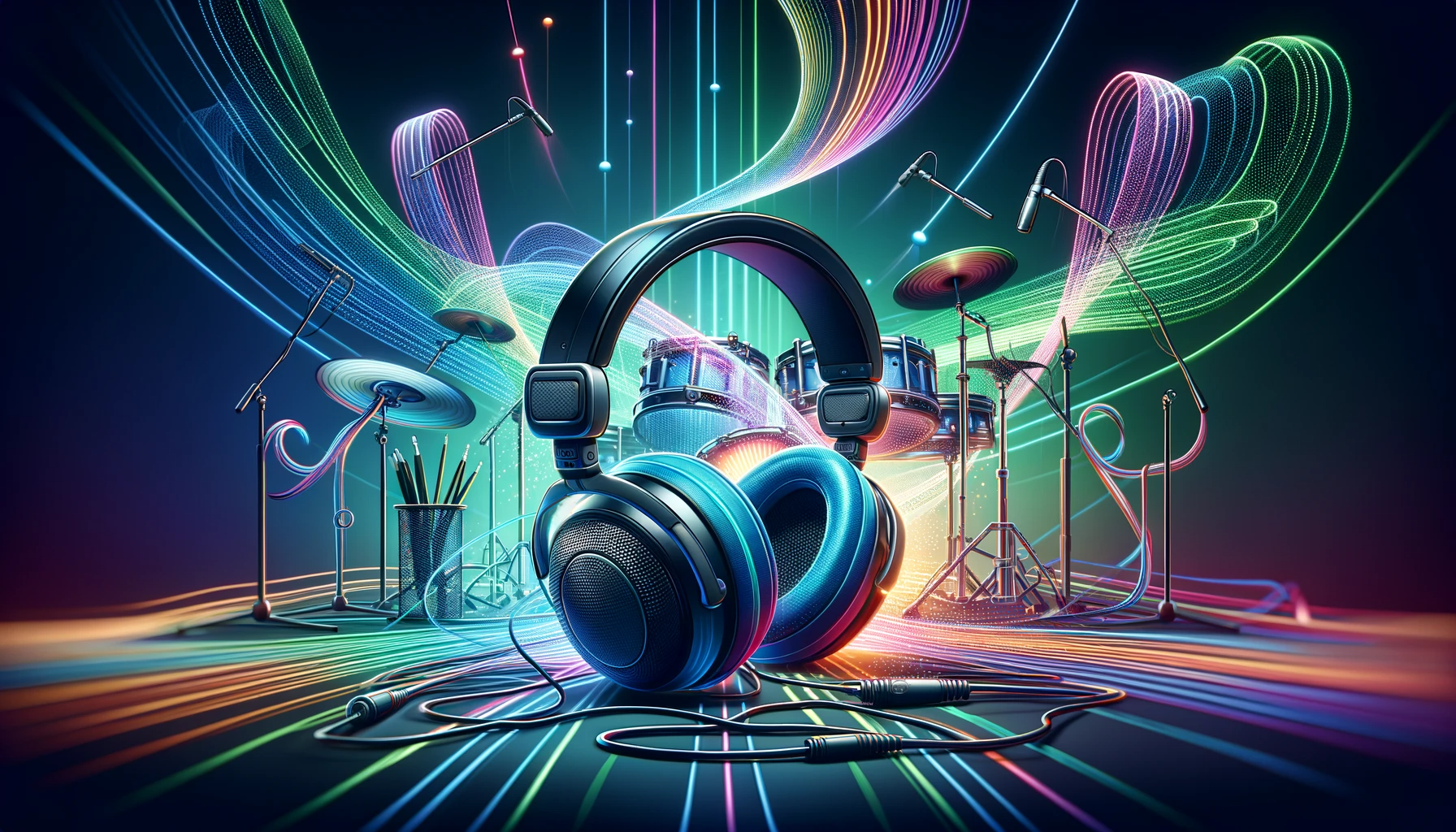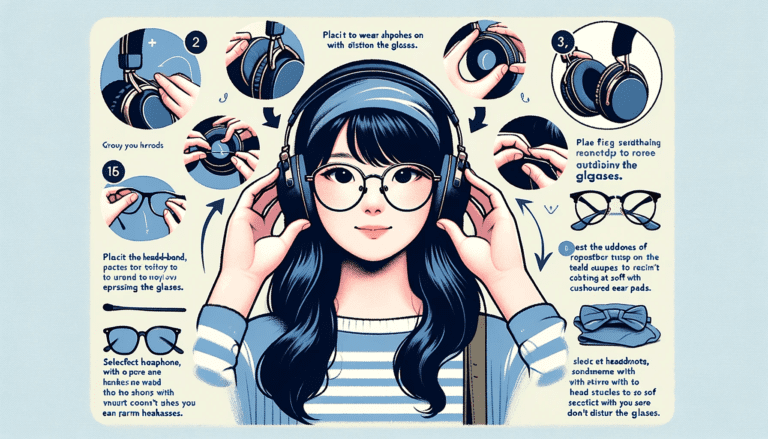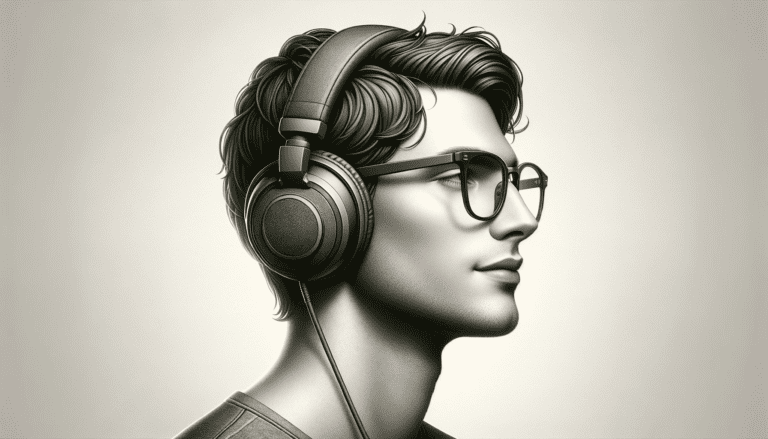As a drummer stepping into the digital age, you might ask, “Can I Use Any Headphones for Electronic Drums?”. This question isn’t just about compatibility; it’s about immersing yourself in the rhythm and nuances of your music. Choosing the right headphones can transform your electronic drumming experience from ordinary to extraordinary. But with so many options available, how do you know which ones are the best fit for your electronic drums?
The short answer is yes but with nuances. While most headphones can connect to electronic drum kits, not all will deliver the exceptional sound quality and comfort needed for prolonged sessions. Headphones specifically designed for electronic drums often offer enhanced bass response and sound isolation, crucial for an immersive drumming experience. They also tend to be more durable to withstand the rigors of regular use.
However, the journey to find the perfect headphones for your electronic drums doesn’t end here. There’s a world of options with varying features, prices, and specifications. Do you opt for noise-canceling capabilities, or is sound quality your top priority? How do expert drummers like Travis Barker or Dave Weckl approach their headphone choice? Dive into our detailed guide to uncover the best headphones for your electronic drumming needs and why they make a difference. Let’s explore the sonic landscape of electronic drumming together!
The Importance of Choosing the Right Headphones for Electronic Drums
Headphones play a vital role in enhancing your overall experience with electronic drums. Unlike traditional acoustic drums, which produce sound by vibrating air molecules in a physical space, electronic drum kits rely on triggering samples and sounds digitally. This digitized sound production introduces unique challenges when it comes to headphone selection.
Firstly, electronic drum kits often include a wide range of sounds that need to be accurately reproduced through headphones. From crisp cymbals to deep bass kicks, having headphones with a balanced frequency response ensures that you hear each element clearly and without distortion.
Additionally, electronic drummers often rely on headphone monitoring during live performances or practice sessions to isolate themselves from external noise and focus solely on their playing. Beyond sound quality considerations, comfort is another crucial aspect when selecting headphones for extended drumming sessions.
As a drummer, you need a pair of headphones that fit securely and comfortably without causing discomfort or fatigue over time. This allows you to fully immerse yourself in your performance or practice without distractions.
Exploring the Compatibility of Different Headphones with Electronic Drums
Now that we understand why choosing the right headphones for electronic drums is important let’s delve into compatibility factors that come into play when selecting your ideal pair. Impedance: Impedance refers to the electrical resistance of headphones and affects how they interact with the electronic drum kit.
Headphones with high impedance require more power to drive them, while low-impedance headphones can be driven with less power. It’s important to choose headphones that match the output impedance of your electronic drum module to ensure optimal performance.
Sensitivity: Sensitivity measures how efficiently headphones convert electrical signals into sound. Higher sensitivity ensures louder volume levels without requiring excessive power.
This makes them suitable for electronic drums, as they allow you to hear nuanced details even at lower volume settings. Frequency Response: The frequency response refers to the range of audio frequencies that a pair of headphones can accurately reproduce.
Since electronic drums cover a wide spectrum of frequencies, it’s essential to choose headphones with a frequency response that matches or exceeds the range of sounds produced by your drum kit. By considering these compatibility factors along with your personal preferences and budget, you’ll be able to narrow down your choices and find headphones that will complement your electronic drums perfectly. You may read also the guide on Can Noise-Canceling Headphones Cause Headaches
Understanding Electronic Drums
Brief overview of electronic drum kits and their components
When it comes to electronic drums, we’re stepping into the realm of digital percussion. Unlike their traditional acoustic counterparts, electronic drum kits rely on sensors and triggers to produce sound.
Each component of an electronic drum kit has a designated trigger that sends signals to a sound module, which then generates the desired sound. The basic components include drum pads, cymbal pads, a hi-hat controller pedal, and a kick pad or pedal.
These components act as the building blocks for your virtual drum set. The drum pads are usually made of rubber or mesh material and are pressure-sensitive to mimic the feel of hitting an acoustic drum head.
The cymbal pads function similarly but often include multiple zones to replicate various playing techniques like crashes, rides, or even bell hits. And let’s not forget the hi-hat controller pedal – it allows you to control both open and closed hi-hat sounds by mimicking foot movements.
Advantages of using electronic drums over acoustic drums
Now that we have a grasp on what constitutes an electronic drum kit let’s dive into why they’re increasingly popular among musicians. One significant advantage is their versatility in sound production.
With just a few button presses or adjustments in the sound module, you can effortlessly switch between different drum kit presets ranging from jazz to rock or even experimental percussion setups. This flexibility makes them perfect for recording sessions where multiple styles are required.
Another advantage lies in the ability to practice silently using headphones without disturbing neighbors or roommates (unless you’re into heavy metal at 2 am). By utilizing headphones with good noise isolation properties, you can fully immerse yourself in your practice session without any external distractions creeping in.
Furthermore, electronic drums offer convenient features for beginners looking to develop their skills. Many models come equipped with built-in metronomes, practice exercises, and even coaching functions that provide instant feedback on your timing and accuracy.
These tools can be invaluable for honing your drumming abilities. Last but not least, electronic drums take up significantly less space than their acoustic counterparts.
For those living in apartments or smaller homes where space is a premium, electronic drum kits provide a compact solution without compromising on sound quality or playability. You can even fold them up and stow them away when not in use.
Understanding the components and advantages of electronic drum kits sets the foundation for choosing the right headphones to enhance your drumming experience. Now that we’ve got the basics covered, let’s move on to exploring headphone compatibility factors with electronic drums.
Headphone Compatibility Factors
Impedance: What it means and its impact on headphone usage
When it comes to using headphones with electronic drums, one essential factor to consider is impedance. Impedance refers to the electrical resistance that a headphone presents to an audio source, such as an electronic drum module or amplifier.
It is typically measured in ohms (Ω). The impedance of your headphones affects the amount of power required for them to produce sound effectively.
For electronic drums, it’s generally recommended to use headphones with a low impedance rating. This is because electronic drum modules usually have limited power output compared to other audio sources like a home stereo system or professional studio equipment.
Headphones with low impedance (around 16-32 Ω) require less power, making them ideal for connecting directly to electronic drum kits. On the other hand, using high-impedance headphones with electronic drums might result in lower volume levels and reduced clarity.
High-impedance headphones often require more power to drive them effectively, which may exceed the capabilities of some electronic drum modules or amplifiers. Therefore, when choosing headphones for your electronic drums setup, opting for models with lower impedance can ensure optimal performance.
Sensitivity: How sensitivity affects the volume and clarity of sound produced
Sensitivity refers to how efficiently a pair of headphones converts an electrical signal into sound waves at a specific volume level. It is measured in decibels per milliwatt (dB/mW).
Headphones with higher sensitivity ratings can produce louder sounds even when driven by low-power devices like portable music players or smartphones. For electronic drums, it’s advisable to select headphones with higher sensitivity levels (around 100 dB/mW and above) because they are better able to reproduce the dynamic range of drum sounds accurately.
With greater sensitivity, you’ll be able to hear subtle nuances and details in your drumming, enhancing your overall playing experience. However, it’s important to note that high sensitivity doesn’t necessarily equate to better sound quality.
Headphones with excessively high sensitivity can sometimes introduce distortion or hissing noises when connected to electronic drum kits. Therefore, striking a balance between sensitivity and sound quality is crucial when choosing headphones for electronic drums.
Frequency response: Matching headphone frequency range with drum sounds
The frequency response of headphones refers to the range of audio frequencies they can produce accurately. It is measured in Hertz (Hz) and is typically represented by a frequency spectrum graph that shows the headphone’s performance across different frequencies. For electronic drums, it’s essential to choose headphones with a wide and balanced frequency response.
Electronic drums produce a diverse range of sounds, from deep bass kicks to crisp cymbals. Therefore, having headphones that can accurately reproduce both low-end and high-end frequencies ensures you hear every detail of your drumming.
Look for headphones with a frequency response that covers the entire audible spectrum (20 Hz – 20 kHz) or even extends beyond these limits. This will guarantee that all the nuances and subtleties of your drum sounds are faithfully reproduced without any significant loss or distortion in specific frequency ranges.
When considering headphone compatibility for electronic drums, factors such as impedance, sensitivity, and frequency response play crucial roles. Opting for low-impedance headphones ensures compatibility with electronic drum modules’ power output capabilities.
Choosing headphones with higher sensitivity levels enhances volume levels without compromising sound quality. Selecting headphones with a wide and balanced frequency response guarantees accurate reproduction of the diverse range of sounds produced by electronic drums. You may read the guide on Can Bone Conduction Headphones Cause Hearing Loss
Types of Headphones for Electronic Drums
Closed-back headphones: Benefits for noise isolation and sound immersion
When it comes to electronic drums, closed-back headphones are a popular choice among drummers for several reasons. These headphones are designed with a solid outer shell that covers the back of the ear cups.
This design helps to isolate external noise, allowing you to focus on the drumming experience without any distractions. So, whether you’re practicing in a noisy environment or playing live on stage, closed-back headphones can be your best friend!
Not only do closed-back headphones excel in noise isolation, but they also offer an immersive sound experience. The closed design prevents sound leakage and directs all the audio directly into your ears.
This means that you can truly feel enveloped by the powerful drum sounds, enhancing your overall playing experience. When it comes to closed-back models suitable for electronic drums, there are some standout options worth considering.
The Audio-Technica ATH-M50x is a fan favorite amongst drummers due to its exceptional audio quality and robust build. Another popular choice is the Beyerdynamic DT 770 Pro, known for its excellent noise isolation capabilities and comfort during long practice sessions.
However, it’s essential to note that closed-back headphones do come with potential drawbacks. One of them is their limited soundstage compared to open-back models.
Soundstage refers to the perceived spatial representation of sounds within a headphone’s listening environment. While closed-back headphones provide an immersive experience in terms of surrounding yourself with sound, they may lack some depth and width when it comes to accurately reproducing spatial cues.
Open-back headphones: Advantages in terms of natural sound reproduction
If you value natural sound reproduction and a more airy listening experience while playing electronic drums, open-back headphones might be just what you’re looking for! Unlike their closed counterpart, open-back headphones feature perforated ear cups that allow sound to escape from the back, creating an open soundstage.
Open-back headphones are known for their ability to provide a more natural and accurate representation of audio. With their spacious soundstage, they excel at recreating the feeling of being in a live studio environment.
This can enhance your drumming experience by providing a more realistic perception of the instruments’ placement and spatial cues. When it comes to open-back models suitable for electronic drumming, the Sennheiser HD 600 is often recommended for its exceptional audio clarity and detailed representation.
Another popular choice is the AKG K702, which offers an immersive and wide soundstage perfect for discerning drummers. However, it’s important to consider potential issues related to noise leakage when using open-back headphones.
Since these headphones allow sound to escape from the back, they can also let external sounds in. This means that if you’re playing in a loud or distracting environment, open-back headphones may not provide sufficient isolation and might compromise your focus during practice or performance.
Choosing between closed-back and open-back headphones depends on your personal preference and specific needs as a drummer. Closed-back headphones excel in noise isolation and provide an immersive experience with powerful drum sounds.
On the other hand, open-back headphones offer natural sound reproduction with a wider soundstage but may be less suitable if you require significant noise isolation. Consider trying both types if possible before making your final decision – finding the right pair of headphones is essential for maximizing your electronic drumming experience!
Wireless vs Wired Headphones for Electronic Drums
Exploring the convenience and freedom offered by wireless headphones
When it comes to electronic drums, one of the primary concerns for drummers is the tangled mess of wires that often accompany traditional wired headphones. This is where wireless headphones swoop in like a heroic drummer on a double-bass pedal.
With wireless headphones, you can bid farewell to those pesky cables and embrace the freedom to move around your drum kit without fear of tripping over cords or getting all tangled up like a jazz drummer’s snare rolls. Imagine grooving to your beats while casually strutting around the room without restraint – it’s every drummer’s dream!
Discussing popular wireless headphone options
Now that we’ve piqued your interest in going wire-free, let’s dive into some popular options for wireless headphones suitable for electronic drums. One highly regarded choice is the Sony WH-1000XM4, known not only for its fantastic noise-cancellation capabilities but also its ability to deliver crisp audio with punchy bass response.
Another contender in this arena is the Beats Studio3 Wireless, which boasts an iconic design and excellent battery life – perfect for those marathon jam sessions. And let’s not forget about the JBL Quantum 800, offering both wireless connectivity and impeccable sound quality.
Addressing concerns regarding latency issues
While wireless headphones provide convenience and mobility, some drummers worry about potential latency issues – that dreaded delay between hitting a pad and hearing the sound through their headphones. But fear not!
Many modern wireless headphone models have made great strides in minimizing latency problems. Manufacturers have implemented advanced Bluetooth technologies like aptX Low Latency or AAC codec support to ensure near-instantaneous sound transmission – so you’ll feel as if you’re playing on an invisible tether.
Wired headphones: Benefits in terms of stability and audio quality
Now, let’s give some love to the tried-and-true wired headphones. While wireless options offer convenience, wired headphones have their own distinct advantages that make them a reliable choice for electronic drummers.
Firstly, wired headphones provide a stable connection that eliminates any concerns about signal dropouts or interference during your drumming sessions. Additionally, when it comes to audio quality, wired connections tend to offer a more consistent and reliable sound reproduction compared to wireless alternatives.
Explaining different wired connection options (3. mm, USB, etc.)
Wired headphones come in various flavors when it comes to connectivity options. The most common connector you’ll encounter is the trusty 3.5mm audio jack – that small yet powerful plug found on most devices. Simply plug one end into your electronic drum module or headphone amplifier and the other into your headphone’s designated port – voila!
You’re ready to rock out with exceptional clarity and precision. Another increasingly popular option is USB connectivity, which allows for digital audio transfer and often includes additional features like onboard sound processing or customizable EQ settings.
Highlighting top-quality wired headphone choices
For those aficionados who value the stability and uncompromising audio fidelity offered by wired headphones, several top-quality alternatives deserve recognition. The Audio-Technica ATH-M50x is widely regarded as an industry standard due to its accurate sound reproduction and comfortable fit for extended wear. If you’re seeking a touch of luxury combined with superb audio performance, the Sennheiser HD 660 S will surely captivate your audiophile heart with its precise imaging and rich tonal balance.
Choosing between wireless or wired headphones for electronic drums depends on your personal preferences and priorities as a drummer. Wireless options provide unparalleled freedom of movement while offering remarkable convenience, but latency concerns may arise in some cases.
On the other hand, wired headphones ensure stable connections and consistent audio quality without the worry of battery life or latency issues. Whichever path you choose, there are plenty of outstanding wireless and wired headphone options available that will enhance your drumming experience and keep you in rhythm with the beat.
Headphone Accessories & Features to Consider
Noise Cancellation Technology: Enhancing Focus during Practice Sessions
When it comes to practicing on electronic drums, maintaining focus is crucial for honing your skills. That’s where noise cancellation technology can be a game-changer.
These headphones are designed to block out external sounds, allowing you to immerse yourself in your drumming without any distractions. Noise cancellation headphones work by using microphones to pick up external sounds and then producing an opposite sound wave that cancels out the incoming noise.
This technology is especially beneficial if you practice in a noisy environment or live with roommates who might not appreciate your late-night drumming sessions. The effectiveness of noise cancellation varies across different headphone models, so it’s important to do some research before making a purchase.
Look for headphones that offer active noise cancellation (ANC), as they tend to provide better isolation from ambient sounds. Additionally, consider the comfort factor when choosing noise-cancellation headphones since they often have larger ear cups and padding for extended use.
Headphone Amplifiers: Improving Audio Quality and Power Output
While most electronic drum kits have built-in headphone outputs, adding a dedicated headphone amplifier can enhance both the audio quality and power output of your headphones. A headphone amplifier acts as an intermediary between your drum module and the headphones, boosting the signal strength and improving overall sound reproduction. One of the main advantages of using a headphone amplifier is its ability to deliver more power than conventional built-in amplifiers found in most electronic drums.
This extra power allows your headphones to produce louder volumes without sacrificing audio clarity or introducing distortion. Headphone amplifiers also provide additional control over sound customization, offering EQ adjustments or tone-shaping options.
This feature can be particularly useful if you prefer specific frequency boosts or cuts while playing drums. When shopping for a headphone amplifier for electronic drums, consider factors such as compatibility with your drum module, the number of headphone outputs it supports, and any additional features or controls that might enhance your drumming experience.
Conclusion
Finding the right headphones for electronic drums involves considering various factors such as impedance, sensitivity, and frequency response. Closed-back headphones provide better noise isolation, while open-back headphones offer a more natural sound reproduction. Additionally, wireless headphones provide convenience and freedom of movement but can be susceptible to latency issues.
On the other hand, wired headphones offer stability and reliable audio quality. To enhance your practice sessions further, you can consider accessories like noise-cancellation headphones that help you focus by blocking external sounds.
Headphone amplifiers are also worth considering as they improve audio quality and power output. Remember that selecting the perfect pair of headphones ultimately depends on personal preferences and requirements.
So take your time to research different models, read reviews, and try them out if possible before making a decision. With the right set of headphones on your ears during drumming sessions, you’ll elevate your experience to new heights – enjoying crystal-clear sound reproduction while immersing yourself in the rhythmic world of electronic drums!







